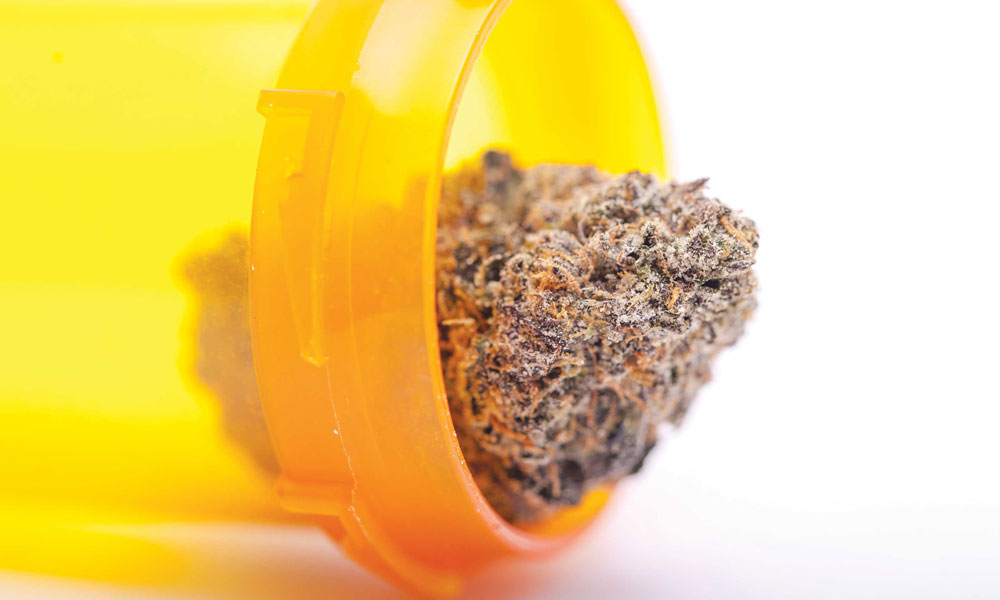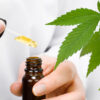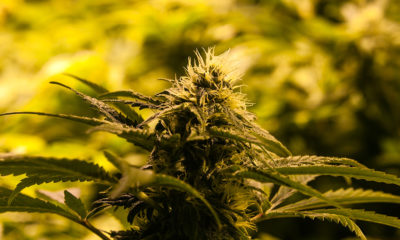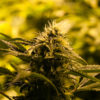
Medical
A Cancer Survivor’s Guide to Using Cannabis to Cope With Chemotherapy
A medical marijuana regimen can help cancer patients manage the negative effects of chemotherapy.
When I was diagnosed with Stage 3 colon cancer, I decided to get my California medical cannabis card and used medicinal cannabis products for effective symptom management. This helped me avoid taking other pharmaceuticals that could have caused further complications during treatment. There are so many things I wish I would have known then that I know now, but my expertise today helps other patients make empowered choices about their cannabis use.
My first experience in a dispensary left me feeling as though I was doing something wrong and had me fearful of asking questions. When I did ask questions, I received vague answers. In turn, I made mistakes in my self-medication and, though not fatal, at times it was uncomfortable and inconvenient.
Part of the disconnect with my dispensary experience was that I didn’t know how to find what worked for me. We have a broad general knowledge of how cannabis — with its many modes of medicating, chemotypes and cultivars — manifests in the body. But human beings are walking chemistry experiments, which means there will be differences in our reactions. We need to find our personal patterns with cannabis (or any ingested substance for that matter) by paying close attention to what we choose and how (or if) it helps to have a better understanding of how to use cannabis as medicine.
Journaling is a great way to keep track of the types of cannabis you’re using and document their effects. What worked, what didn’t work and why — along with how much of the medicine you took — are important things to track and relay to a dispensary during your next visit. The key is to find the lowest dosage in the appropriate ratios that create the desired effect in your body.
Chemotherapy’s side effects take a huge toll on everyday life. The experience of having to get so much sicker in order to get better impacts not only your body, but your mental health as well. Cannabis can help manage symptoms stemming from both the body and mind and, in some instances, can act as a preventative measure against further damage.
Here are some of the more common side effects of chemotherapy and how cannabis interacted with each of them:
(Please note that each type of chemo has its own particular side effects and some of us are more sensitive to these drug treatments than others.)
Fatigue
Cancer treatments can leave you wiped out or overstimulated. Inhaling small amounts of uplifting sativa flowers or using a sativa-based low dosage (2.5 – 5 mg THC) sublingual preparation (dissolved under the tongue) can lift your mood without being too sedating.
Insomnia
Insomnia is a common symptom of chemotherapy. If you are having problems getting to sleep, inhaling indica flowers can be helpful. If you are having problems staying asleep, using an indica edible will keep you peaceful overnight. Remember, if you feel a little “stoned over” in the morning, you should take down the volume of the edible. In either case, if there is anxiety around sleep or inflammation with pain, a 1:1 ratio of CBD and THC may be more appropriate.
Infection & Immune System Issues
It’s important to note that though there have never been fatalities from cannabis use alone, there are significant risks around using untested products, dried flowers in particular, if you have a compromised immune system. Untested products can contain mold, fungus or mildew that might mildly irritate someone with a hardy immune system but can sicken or even kill someone with a compromised immune system. Many states require testing nowadays, but if the state where you live doesn’t, ask companies whose products you want to use if they test and ask to see the reports.
Nausea & Vomiting
Using THC in an edible or smokable format during chemo helped me to forgo using anti-nausea drugs after my first day of treatment. For me, that was huge, as the antiemetics proscribed to treat nausea have constipating side effects that, for a colon cancer patient, can be deadly. It’s important to note that though CBD ratios help with nausea, they can also act as an anorectic, which is problematic if you’re already having issues with eating. Eating candied ginger will also help with nausea.
Decreased Appetite
Smoking or eating small amounts of THC will help pique appetite. For patients that are particularly sensitive to THC, I will often recommend trying the non-euphoric cannabinoid THCA. If you do need some CBD in your regimen around meal times, try a 1:1 CBD to THC ratio in either an edible or smokable format because the introduction of THC can help counter CBD’s appetite-reducing properties. I always like to give some non-cannabis advice around this issue as well. The book that saved me while going through treatment is called “The Cancer-Fighting Kitchen” by Rebecca Katz. This book addresses the nutritional challenges of treatment and offers great recipes to address a number of symptoms and get you eating again. I can’t praise it enough.
Anticipatory Nausea & Anxiety
The night before or the day of chemo can cause anxiety and anticipatory nausea. Higher CBD ratios such as 18:1 CBD to THC in an edible or tincture can help take down the jitters and nausea while keeping you clear-headed.
Constipation From Opioid Usage & Opiate Withdrawal
Another challenge during my treatment was using opioids. There were times I needed them for pain management, such as when I had my colon re-sectioned and the tumor removed, or for the intense discomfort I felt from my neuropathy. But the constipating effects were challenging, as were the withdrawal symptoms I felt when I weaned myself off after two weeks of using opioids after surgery. Using THC helped me lower my opiate use by amplifying the analgesic effects of Norco, the medication I was taking, without creating danger. It smoothed out the withdrawal effects as well — the restlessness, pain and sleeplessness disappeared once I started adding cannabis to the mix. Another great tool for avoiding constipation is something you can make at home called “power pudding.” It’s a home remedy involving prunes and bran and you can find many recipes for it online.
Mouth, Tongue & Throat Problems
Chemotherapy targets rapidly dividing cells in the body and does not discern which are cancerous or not. This is why some of us have upset bowels and diarrhea, or experience mouth, tongue and throat discomfort when receiving chemotherapy treatment. Cannabis is great for soothing pain, taking down inflammation and helping in the healing process. Tinctures rich in CBD are especially helpful. However, if you are experiencing mouth irritation, it would not be a good idea to use an alcohol-based tincture, as it will further irritate mucous membranes.
Chemotherapy-Induced Peripheral Neuropathy (CIPN)
The platinum salts — including oxaliplatin and cisplatin — used in chemotherapy, along with other chemotherapeutic agents, are known to cause neuropathy in patients. Neuropathy is weakness and pain that one feels, usually in the hands and feet, thanks to damage to peripheral nerves. Some people feel it the first round of chemo, others later in treatment and we all feel it in different intensities and have different recovery times. I am seven years out of chemo and I still suffer from neuropathy. A 2014 study found that CBD prevents neuropathic pain and thermal sensitivity, while not negatively affecting nervous system function or the efficacy of the chemotherapy treatment. Taken before, during and after treatment, patients have reported not getting neuropathy, experiencing it to a lesser degree and bouncing back much faster with less residual pain and numbness.
Skin Changes
Chemotherapy can cause dry skin and inflammation from radiation. Luckily, the skin loves cannabis. Topicals are completely non-euphoric, which makes them a great mediator to use at any time and ideal for those who need symptom relief without euphoric effects. Often times, I’ll suggest a patient use the same high-CBD tincture they are taking for anxiety or pain and apply it as a topical for irritation from radiation. CBD takes down the inflammation and THC helps mitigate pain — and collectively, they help the skin heal so much faster. A topical salve with a 1:1 ratio of CBD and THC will heal dry and inflamed skin with great emollient effects.
After chemo, many patients may find they are still experiencing side effects such as anxiety, residual pain and depression. Healing from chemotherapy is a long process. The cannabis knowledge gained through treatment can also help address this phase in symptom management. In addition, be kind to yourself. As survivors, we must take a restorative approach to healing and learn how to be ourselves in a whole new way.
Originally published in the print edition of Cannabis Now.


























